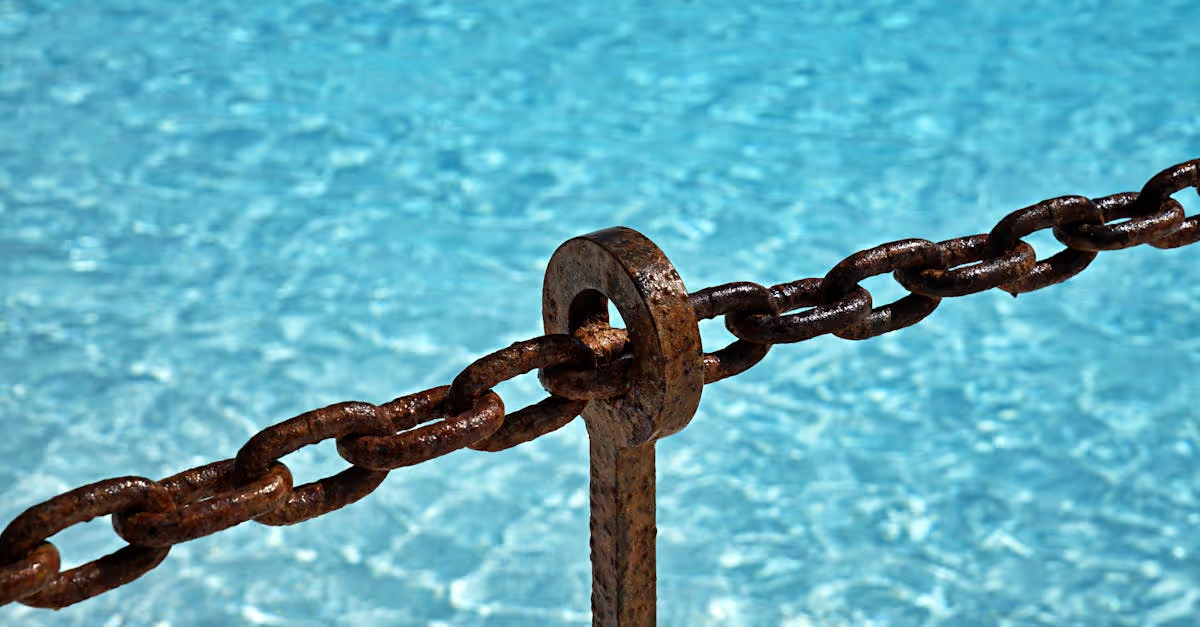Key Takeaways
- Year-Round Maintenance is Essential: Consistent upkeep not only enhances your pool's lifespan but also ensures safe and inviting swimming conditions for your family and friends.
- Seasonal Checklists: Each season has specific maintenance tasks—spring cleaning, summer water testing, fall debris removal, and winterization techniques—to keep your pool in excellent condition.
- Utilize Appropriate Equipment: Invest in essential pool cleaning tools, like skimmers and robotic cleaners, as well as water testing kits to maintain water chemistry and clarity effectively.
- Focus on Water Chemistry: Regularly check and balance pH levels and sanitization methods to prevent algae growth, maintain swimmer comfort, and protect your pool equipment.
- Prevent Costly Repairs: Routine maintenance can identify potential issues early, preventing costly repairs and ensuring your pool remains a cherished community amenity.
- Create a Safe Swimming Environment: Proper maintenance protects against health risks associated with unbalanced chemicals and debris, ensuring all swimmers can enjoy your pool.
Owning a pool is a dream for many, but keeping it in top shape year-round can feel overwhelming. Did you know that proper maintenance can extend the lifespan of your pool by up to 50%? Whether it's the scorching summer sun or the chilly winter winds, each season brings unique challenges that can affect your pool's health.
From water chemistry to equipment checks, our approach to year-round pool care ensures you can enjoy a sparkling oasis no matter the weather. Let’s dive into the essential tips and tricks that will help us maintain our pools effectively, keeping them safe and inviting for family and friends throughout the year.
Importance of Year-Round Pool Maintenance
Maintaining our pool throughout the year holds significant value for its longevity and cleanliness. Consistent upkeep protects our investment and creates a welcoming space for family and friends.
Benefits of Consistent Maintenance
Consistent maintenance offers several advantages. First, it extends a pool's life by preventing costly repairs. Regular cleaning and chemical balancing avoid damage caused by algae, bacteria, and debris. Second, maintaining the correct water levels and pH keeps the water clear and safe for swimming. Moreover, routine checks ensure the filtration system operates efficiently, minimizing energy costs. Finally, annual inspections can identify issues before they escalate, protecting us from surprise expenses. In the long run, embracing year-round upkeep showcases responsibility in maintaining a shared community amenity; after all, who wants to swim in a swamp?
Common Issues from Neglect
Neglecting maintenance leads to multiple problems. First, we encounter algae growth, which can turn our pool into a green nightmare. Further, unbalanced chemicals lead to skin irritations and potential health risks. Falling debris can damage the pool lining and equipment, causing unnecessary repairs. Additionally, when we skip winterization, freezing temperatures can wreak havoc on pipes, leading to expensive replacements. Ignoring these concerns isn't just risky; it’s a slippery slope toward a pool that's more hassle than pleasure. How many of us have recovered from a 'pool party gone wrong'? By committing to maintenance, we keep our pools enjoyable for everyone.
Seasonal Maintenance Tips
Maintaining our pool throughout the year takes effort, but it brings rewards. Each season presents its own tasks to keep our pool in top shape. Here’s what we need to do for each season.
Spring Maintenance Checklist
Spring brings new life and calls for our pool to shine again. We start by cleaning the cover. Removing debris, hosing it down, and air-drying it helps prevent mold. Next, we check the water level and the pump’s operation. Adding water keeps it at a suitable level. Backwashing or replacing the filter ensures effective circulation. Scrubbing the sides and steps removes algae and grime. For stubborn spots, we might consider an acid wash. Lastly, shocking the water eliminates excess bacteria.
Summer Care Essentials
Summer is the time for fun and relaxation by the pool. We should test the pool water at least twice a week to keep chemical balances right. Adjusting chemical levels promotes healthy water. Regular skimming of leaves and debris prevents clogs. Cleaning the filter weekly helps maintain smooth flow. We might also run the pump daily for several hours to circulate water effectively. Enjoying a clean and clear pool makes summer gatherings memorable.
Fall Preparation Steps
As fall settles in, it’s time to prepare for cooler weather. We should continue regular water testing, adjusting chemicals as needed. Removing leaves and debris becomes crucial to prevent stains. Next, we can check the pool cover for any damage before storing it. Keeping our water level low can help prevent freeze damage. If we notice any issues, now’s the time for maintenance or repairs. Helping our pool transition smoothly into winter is key.
Winterization Techniques
Winter demands careful planning for our pool. We should thoroughly clean the pool and remove any remaining debris. Lowering the water level protects it from freezing. We can add winter chemicals to prevent algae growth and protect our pool surfaces. Draining and storing pool equipment, like pumps and filters, keeps them in good shape. Lastly, securely covering the pool helps protect against winter elements. Following these steps ensures our pool remains a welcoming oasis for the next summer.
Essential Pool Equipment
Maintaining a pool year-round requires proper equipment to keep it clean and safe. Key components make this task manageable and efficient.
Pool Cleaning Tools
Pool cleaning tools play a vital role in maintaining water clarity. Skimmers lift debris from the surface, preventing it from clogging the pump and filter. Without skimmers, leaves and dirt would transform our pools into murky ponds.
Autonomous pool cleaners, also known as robotic cleaners, simplify the process by vacuuming dirt and debris. Imagine having a tiny robot whizzing around, taking care of the grime while we relax on the deck. These cleaners save time and effort, making regular maintenance straightforward.
Additionally, using a manual vacuum connected to our pool's filter can help remove stubborn dirt that stubbornly clings to the bottom. With these cleaning tools, we tackle debris before it becomes a bigger issue.
Water Testing Kits
Water testing kits are essential for maintaining balanced water chemistry. These kits allow us to regularly check pH levels, chlorine, and alkalinity. Keeping these levels in check prevents issues like algae growth and cloudy water.
Test strips offer quick results with simple color-coded readings, making it easy for us to manage our pool’s health. If the strips show unbalanced levels, we can take immediate action to correct them.
Regular testing also builds comfort and confidence in our pool’s safety for family and friends. Who doesn't want to dip into sparkling, clear water? By integrating water testing kits into our routine, we create a safe and enjoyable swimming experience for all.
Water Chemistry Management
Water chemistry management plays a crucial role in keeping our pool healthy and inviting throughout the year. Regular testing helps us maintain the right chemical balance, promoting swimmer safety and equipment longevity.
Balancing pH Levels
Balancing pH levels keeps our pool comfortable and safe. We aim for a pH range of 7.4 to 7.6. If the pH strays outside this range, swimmers might experience eye irritation or skin issues. Checking pH helps keep the water pleasant. We can test our pool weekly or monthly, depending on usage. Remember to adjust chemical levels accordingly. Adding acid lowers the pH, while adding soda ash raises it. Consistency in testing ensures a balanced pool experience.
Sanitization Methods
Sanitization methods protect our pool from harmful bacteria and algae. Using chlorine remains popular due to its effectiveness, but alternatives like saltwater systems exist. Chlorine keeps our water clear and inhibits growth, creating a safe swimming environment. Routine testing helps us determine the chlorine level, which should sit between 1 to 3 ppm. Consideration of other sanitization methods, such as bromine or UV systems, can also suit our pool needs. Finding the right method provides peace of mind, knowing our investment enjoys longevity and a welcoming space for family and friends to enjoy.
Conclusion
Maintaining our pool throughout the year is essential for enjoying a safe and inviting space. By staying committed to seasonal tasks and utilizing the right tools we can prevent costly repairs and ensure crystal-clear water. Regular water testing and proper chemical balance keep our swimming environment healthy and comfortable for everyone.
With a little effort and attention, we can transform our pool into a year-round oasis. Let’s embrace the maintenance routines that protect our investment and enhance our outdoor experience. After all, a well-cared-for pool not only adds value to our property but also creates countless memorable moments with family and friends.
Frequently Asked Questions
What are the main challenges of maintaining a pool year-round?
Maintaining a pool year-round presents challenges such as algae growth, chemical imbalances, and damage from debris. Seasonal changes impact water quality, requiring different care methods to keep the pool safe and inviting.
How can proper maintenance extend a pool's lifespan?
Proper maintenance can extend a pool's lifespan by up to 50% by preventing costly repairs, maintaining water clarity, ensuring efficient filtration, and catching potential issues early through regular inspections.
What seasonal maintenance tasks should I perform?
In spring, clean the cover, check water levels, and scrub surfaces. During summer, regularly test water and remove debris. In fall, adjust chemicals and inspect the cover. For winter, clean the pool, lower water levels, and securely cover it.
What essential pool equipment do I need?
Key pool equipment includes skimmers, autonomous robotic cleaners, and manual vacuums for debris removal. Water testing kits are also crucial for maintaining balanced water chemistry and ensuring a safe swimming environment.
How do I manage water chemistry for my pool?
To manage water chemistry, regularly test and maintain pH levels between 7.4 and 7.6. Test chlorine levels frequently and consider using chlorine or saltwater systems. Proper balance is important for swimmer comfort and safety.






.svg)
.svg)